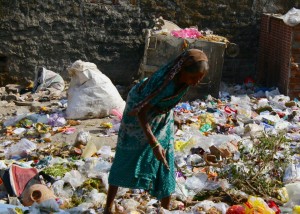
How is it that I first fell in love? Well, it’s funny you ask, because I wasn’t looking for anything serious at the time. She was attractive, full of color and gorgeous people. She had great taste in music and produced some stunning and hilarious pieces of cinema. But it wasn’t until I started reading more about India that she really caught my eye.
When I put down Arundhati Roy’s “The God of Small Things,” I cried. India had taken me by storm overnight, and although it wasn’t love at first sight, I felt it was my destiny to be with her. Our courtship was sweet and short. I decided I was completely in love after we spent the night together watching “Mother India,” a heartbreaking film that tells the story of the creation of a post-colonial Indian identity through the relationship between a mother and her two sons. I was infatuated. I read and wrote about her as much as I could.
When news came that Urban was planning a trip to India in December, it seemed like the perfect opportunity for me to meet her family, step onto her soil, and introduce myself to the subcontinent.
Upon my return, India and I have decided to take a little break. Maybe we moved into things too quickly. I thought I knew so much about her, understood our love, which had seemed so pure. Turns out, I knew hardly anything about her and my love was not necessarily an illusion but far more complex than I ever imagined.
My devotion to India has prompted many to ask, “what’s so great about her?” I could respond with all the things I do love about India – the integration of home and work and religion, the deep sense of community throughout all layers of society, the unity in diversity, the importance of family, the kindness… the list goes on.
But the real question is, how can I possibly love this place? Here, the children learn to beg before they can talk. The men and security guards remind me to be afraid with forbidding stares. The cities and the lakes are covered in trash. The children play in trash. There is no place to put the trash. The rickshaws honk at me all day long. I see men smoking and chatting when they’re supposed to be finishing the infinitely half-finished structure. I cry when I look up to see Mr. Ambani’s 27-story “house,” the most expensive residence in the world, which looks out over Dharavi, the world’s largest slum; he has abandoned it because he is afraid it will bring him bad luck. I cry when I see Asia’s largest slum in the middle of Mumbai’s up-and-coming posh neighborhoods.
Maybe I was fooling myself all along. Perhaps my orientalist fascination with this faraway place was just that – another product of my educational privilege as I can study this place for the rest of my life, knowing I will never live the reality. I didn’t expect India’s family to be pretty; I knew it was going to be full of poverty, corruption, pollution, disease, and malnutrition. I mean all families have their problems, right? Hers just seemed a little more challenging than usual.
Alas, where do I go from here? There are a couple of things I know for certain: I know returning back into the arms of this subcontinent will be easy; I know I feel helpless; and I also know I have a deep desire for my world to intersect with India’s in my consciousness, dreams, and ideals.
